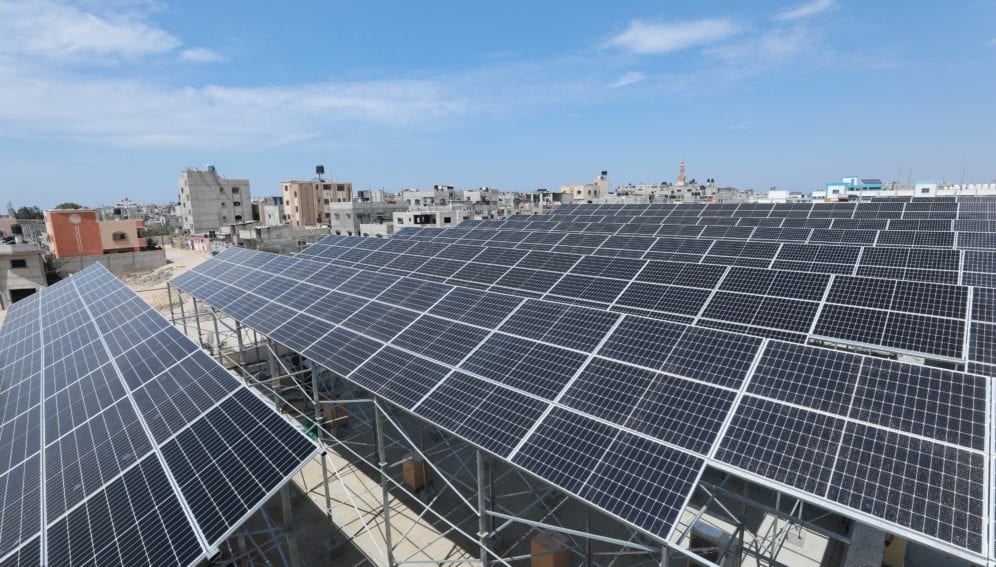By: Basel Alatar
Send to a friend
The details you provide on this page will not be used to send unsolicited email, and will not be sold to a 3rd party. See privacy policy.
(Gaza) – A hospital in the Gaza Strip has become the unlikely location for a new solar power plant, set up to address an energy crisis that is putting patients’ lives at risk.
The power plant at Nasser hospital, inaugurated by the World Health Organization (WHO), is one of a number of efforts to respond to the huge challenge facing the health sector in the Palestinian territory.
Mahmoud Dahir, director of the WHO office in Gaza, says the plant began operating in June with a capacity of 250 kilowatts, which covers 20 per cent of the hospital’s needs.
“The expansion of renewable energy projects, especially solar energy, can be seen as a saviour for the health sector in Gaza,”
Ashraf Abu-Mahady, Gaza Ministry of Health
The US$ 500,000 plant, funded by the Japanese government, will help reduce the hospital’s dependence on emergency generators, and power vital life-saving equipment in the facility that serves 200,000 people.
The Gaza Strip has suffered from a “chronic electricity deficit” for the past 10 years, according to the UN, affecting essential services, such as health, water and sanitation, and undermining the territory’s fragile economy.
The enclave needs 560 megawatts to meet the needs of the population there, according to data from Gaza’s Electricity Distribution Company.
However, the available energy from Israeli power lines is only 120 megawatts, in addition to 83 megawatts from an existing electric power station.
The Nasser hospital power plant will provide around 166,000 tonnes of fuel a year, while limiting the use of emergency generators will help decrease carbon emissions by 185 tonnes per year.
Dahir told SciDev.Net: “The work is ongoing to expand the project so as to reach a production of 550 kilowatts, which would be sufficient to cover 40 per cent of the total needs of Nasser hospital.”
The plant is one of several small projects launched by the WHO to provide energy for vital services in Gaza’s hospitals. According to Dahir, the health sector in Gaza needs US$ 15 million to apply renewable energy projects in all its hospitals.
“If we can secure necessary funds, applying renewable energies will take no more than two years,” he added.
Despite the spread of solar energy projects, getting necessary equipment into the Gaza Strip is still hard, says Mohammed El-Zerd, an importer of solar energy systems in Gaza.
El-Zerd told SciDev.Net: “Israeli occupation has a huge role in acting against traders and organisations getting solar systems, and recently it is becoming very difficult to get solar cells and needed batteries into the Strip”.
Ashraf Abu-Mahady, the director of international cooperation in Gaza’s Ministry of Health, said: “The expansion of renewable energy projects, especially solar energy, can be seen as a saviour for the health sector in Gaza that suffers difficulties in providing necessary fuel for operating and maintaining electrical generators.”
Hospital facilities operating by solar energy will be more cost effective, especially intensive care units, dialysis, operating rooms, and departments storing medicines and vaccines, according to Abu-Mahady.Energy produced over long periods by generators has a high frequency due to instability of the electric current, which can damage hospital equipment in the long term, he adds.
So far, however, no project in Gaza can be sustained without electric energy or alternative generators. Reaching that point needs large areas to place solar cells, which is not easy in a densely-populated place like Gaza.
“Renewable energy will remain an assistance rather than an alternative,” said Abu-Mahady.














